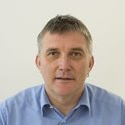Topic Menu
► Topic MenuTopic Editors


2. Center of Excellence for Biodiversity and Molecular Plant Breeding, 10000 Zagreb, Croatia


New Insights in Agriculture: Sustainability, Digitalization and Food Safety

Topic Information
Dear Colleagues,
The growth of the world's population and the increasing vulnerability of agriculture due to global climate change have influenced global thinking about food security. The agricultural sector is at the center of food production, and the main challenges of modern agricultural production are to produce and provide sufficient quantities of healthy and nutritionally valuable food. Other challenges include adapting to climate change while reducing the impact on climate change and biodiversity loss. To meet these challenges, new knowledge must be gained in research and appropriately implemented into sustainable agricultural practices. The agricultural sector is characterized by its complexity and diversity; thus, new solutions and innovative farming practices should be implemented in every aspect of agricultural production, from plant production and animal husbandry to the application of new technologies, appropriate farm management, and environmental impact assessment.
The adoption of new sustainable practices to increase agricultural productivity and reduce the impact on the environment includes the introduction and integration of knowledge from different disciplines such as circular bioeconomy, soil management, biodiversity conservation, environmental protection, information technology, and digitalization. In addition to providing food, the agricultural sector also plays an important role in providing renewable energy sources in the form of bioenergy and contributes to carbon neutrality. However, as food production is an energy-demanding process, crosstalk with other renewable energy sources such as wind and solar energy, geothermal and tidal energy, and hydropower should also be given due consideration, as they can be used not only in agriculture but in all areas of production and daily life in general.
In this Special Issue, we invite you to share your scientific achievements with a holistic approach and contribute to our common goal of maintaining coexistence on the globe through scientific ideas and analysis.
You are invited to participate in the International Renewable Energy Summit (INSORE2023) and in the 58th Croatian & 18th International Symposium on Agriculture. We particularly welcome contributions from SA 2023 and INSORE2023.
Dr. Kristina Kljak
Dr. Klaudija Carović-Stanko
Dr. Darija Lemić
Prof. Dr. Jernej Jakše
Dr. Kurt A. Rosentrater
Prof. Dr. Arup Kumar Goswami
Dr. Craig Sturrock
Topic Editors
Keywords
- agricultural production
- biodiversity
- climate change
- food quality and safety
- renewable energy sources
- bioeconomy
- innovation and technology
Participating Journals
| Journal Name | Impact Factor | CiteScore | Launched Year | First Decision (median) | APC |
|---|---|---|---|---|---|

Agriculture
|
3.6 | 3.6 | 2011 | 17.7 Days | CHF 2600 |

Energies
|
3.2 | 5.5 | 2008 | 16.1 Days | CHF 2600 |

Foods
|
5.2 | 5.8 | 2012 | 13.1 Days | CHF 2900 |

Sustainability
|
3.9 | 5.8 | 2009 | 18.8 Days | CHF 2400 |

MDPI Topics is cooperating with Preprints.org and has built a direct connection between MDPI journals and Preprints.org. Authors are encouraged to enjoy the benefits by posting a preprint at Preprints.org prior to publication:
- Immediately share your ideas ahead of publication and establish your research priority;
- Protect your idea from being stolen with this time-stamped preprint article;
- Enhance the exposure and impact of your research;
- Receive feedback from your peers in advance;
- Have it indexed in Web of Science (Preprint Citation Index), Google Scholar, Crossref, SHARE, PrePubMed, Scilit and Europe PMC.




